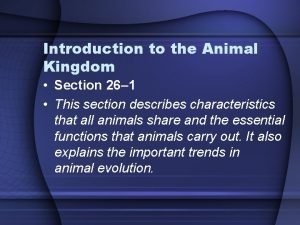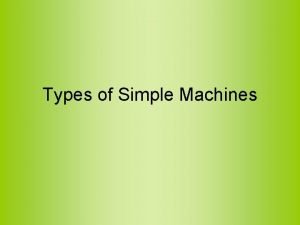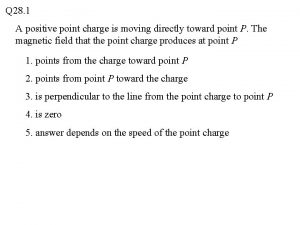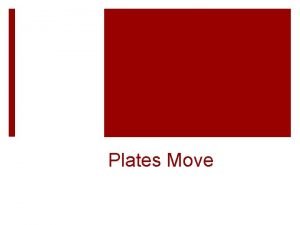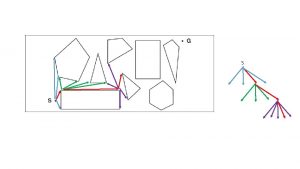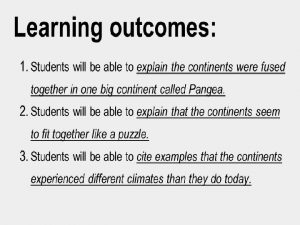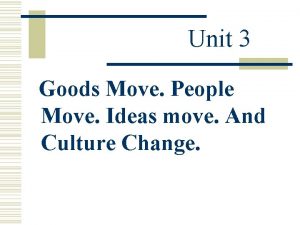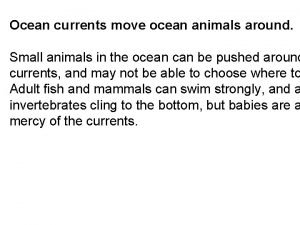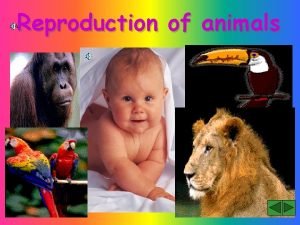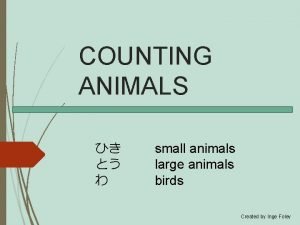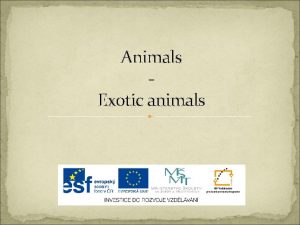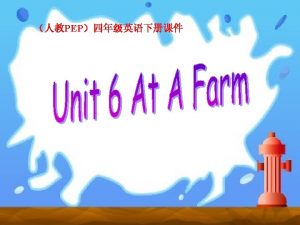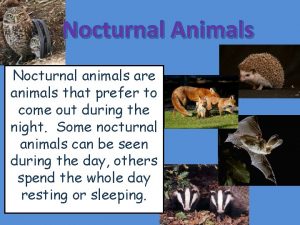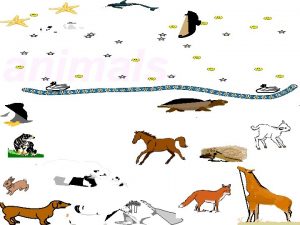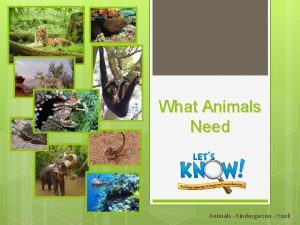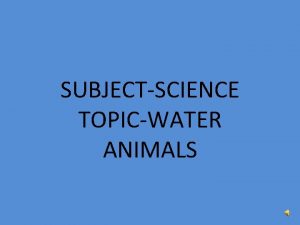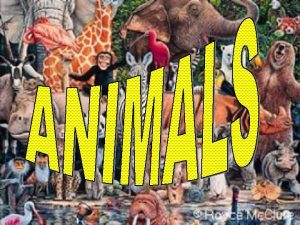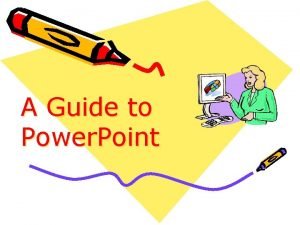Chapter 30 How Animals Move Power Point Lectures








































- Slides: 40

Chapter 30 How Animals Move Power. Point Lectures for Campbell Biology: Concepts & Connections, Seventh Edition Reece, Taylor, Simon, and Dickey © 2012 Pearson Education, Inc. Lecture by Edward J. Zalisko

Figure 30. 0_1 Chapter 30: Big Ideas Movement and Locomotion Muscle Contraction and Movement The Vertebrate Skeleton

30. 2 Skeletons function in support, movement, and protection § Skeletons provide – body support, – movement by working with muscles, and – protection of internal organs. § There are three main types of animal skeletons: – hydrostatic skeletons, – exoskeletons, and – endoskeletons. © 2012 Parson Education, Inc.

30. 2 Skeletons function in support, movement, and protection 1. Hydrostatic skeletons are – fluid held under pressure in a closed body compartment and – found in worms and cnidarians. – Hydrostatic skeletons – help protect other body parts by cushioning them from shocks, – give the body shape, and – provide support for muscle action. © 2012 Parson Education, Inc.

30. 2 Skeletons function in support, movement, and protection 2. Exoskeletons are rigid external skeletons that consist of – chitin and protein in arthropods and – calcium carbonate shells in molluscs. – Exoskeletons must be shed to permit growth. © 2012 Parson Education, Inc.

30. 2 Skeletons function in support, movement, and protection 3. Endoskeletons consist of hard or leathery supporting elements situated among the soft tissues of an animal. They may be made of – cartilage or cartilage and bone (vertebrates), – spicules (sponges), or – hard plates (echinoderms). © 2012 Parson Education, Inc.

30. 3 EVOLUTION CONNECTION: Vertebrate skeletons are variations on an ancient theme § The vertebrate skeletal system provides – structural support – means of locomotion © 2012 Parson Education, Inc.

Bones of the Human Body • The adult skeleton has 206 bones • Two basic types of bone tissue • Compact bone • Homogeneous • Spongy bone • Small needle-like pieces of bone • Many open spaces

Spongy bone Compact bone Figure 5. 1

Classification of Bones • Bones are classified by shape • Long bones • Typically longer than they are wide • Shaft with heads situated at both ends • Contain mostly compact bone • All of the bones of the limbs (except wrist, ankle, and kneecap bones) • Example: • Femur • Humerus

Figure 5. 2 a

Articular cartilage Proximal epiphysis Diaphysis Distal epiphysis (a) Spongy bone Epiphyseal line Periosteum Compact bone Medullary cavity (lined by endosteum) Figure 5. 3 a

Types of Bone Cells • Osteocytes—mature bone cells • Osteoblasts—bone-forming cells • Osteoclasts—giant bone-destroying cells • Bone cells • live in a matrix of flexible protein fibers and hard calcium salts and • are kept alive by blood vessels, hormones, and nerves.

Lamella Osteocyte (b) Canaliculus Lacuna Central (Haversian) canal Figure 5. 4 b

Anatomy of a Long Bone • Epiphyseal plate • Flat plate of hyaline cartilage seen in young, growing bone • Epiphyseal line • Remnant of the epiphyseal plate • Seen in adult bones

Articular cartilage Proximal epiphysis Diaphysis Distal epiphysis (a) Spongy bone Epiphyseal line Periosteum Compact bone Medullary cavity (lined by endosteum) Figure 5. 3 a

30. 3 EVOLUTION CONNECTION: Vertebrate skeletons are variations on an ancient theme § The human skeleton consists of an – axial skeleton – that supports the axis or trunk of the body and – consists of the skull, vertebrae, and ribs and – appendicular skeleton – that includes the appendages and the bones that anchor the appendage and – consists of the arms, legs, shoulders, and pelvic girdles. © 2012 Parson Education, Inc.

Figure 30. 3 A Mandible Pectoral girdle Skull Clavicle Scapula Humerus Sternum Ribs xiphoid process Vertebra Radius Ulna Pelvic girdle Carpals Phalanges Metacarpals Femur Patella Tibia Fibula Tarsals Metatarsals Phalanges

Cranium Bones of pectoral girdle Clavicle Scapula Upper limb Rib Humerus Vertebra Radius Ulna Carpals Bones of pelvic girdle Phalanges Metacarpals Femur Lower limb Tibia Fibula (b) Posterior view Figure 5. 8 b


30. 4 Bones are complex living organs § Cartilage at the ends of bones – cushions joints and – reduces friction of movements. © 2012 Parson Education, Inc. Articular cartilage

30. 4 Bones are complex living organs § Long bones have – a central cavity storing fatty yellow bone marrow – spongy bone located at the ends of bones containing red bone marrow, that produces blood cells. © 2012 Parson Education, Inc.

30. 5 CONNECTION: Healthy bones resist stress and heal from injuries § Osteoporosis is – a bone disease, – characterized by low bone mass and structural deterioration, and – less likely if a person – has high levels of calcium in the diet, – exercises regularly, and – does not smoke. © 2012 Parson Education, Inc.

30. 6 Joints permit different types of movement § Joints allow limited movement of bones. § Different joints permit various movements. – Ball-and-socket joints enable rotation in the arms and legs. – Hinge joints in the elbows and knees permit movement in a single plane. – Pivot joints enable the rotation of the forearm at the elbow. © 2012 Parson Education, Inc.

Figure 30. 6 Head of humerus Humerus Scapula Ulna Radius Ball-and-socket joint Hinge joint Pivot joint

30. 7 The skeleton and muscles interact in movement § Muscles and bones interact to produce movement. § Muscles – are connected to bones by tendons – can only contract, requiring an antagonistic muscle to reverse the action – Example: Flexion of forearm – biceps brachii, extension of forearm – triceps brachii © 2012 Parson Education, Inc.

Figure 30. 7 A Extension Flexion Triceps contracted, biceps relaxed Biceps contracted, triceps relaxed Biceps Triceps Tendons Triceps

30. 8 Each muscle cell has its own contractile apparatus § Muscle fibers (skeletal muscle cells) are cells that consist of bundles of myofibrils – are cylindrical, – have many nuclei, and – are oriented parallel to each other. § Myofibrils contain sacromeres – thick filaments composed primarily of the protein myosin – thin filaments composed primarily of the protein actin. © 2012 Parson Education, Inc.

Sarcolemma Myofibril Light Dark (A) band (I) band Nucleus (a) Segment of a muscle fiber (cell) Figure 6. 3 a

30. 8 Each muscle cell has its own contractile apparatus § Sarcomeres are – repeating groups of overlapping thick and thin filaments – the contractile unit—the fundamental unit of muscle action. © 2012 Parson Education, Inc.

Figure 30. 8 Muscle Several muscle fibers Single muscle fiber (cell) Nuclei Plasma membrane Myofibril Light band Dark Light band Z line Sarcomere Thick filaments (myosin) Thin filaments (actin) Z line Sarcomere Z line

Figure 30. 8_3 Light band Dark Light band Z line Sarcomere Thick filaments (myosin) Thin filaments (actin) Z line Sarcomere Z line

30. 9 A muscle contracts when thin filaments slide along thick filaments § According to the sliding-filament model of muscle contraction, a sarcomere contracts (shortens) when its thin filaments slide across its thick filaments. – Contraction shortens the sarcomere without changing the lengths of the thick and thin filaments. – When the muscle is fully contracted, the thin filaments overlap in the middle of the sarcomere. © 2012 Parson Education, Inc.

Actin Myosin Relaxed Z H Z I A I (a) Contracted Z I (b) Z A I Figure 6. 7 a–b

30. 10 Motor neurons stimulate muscle contraction § A motor neuron – carries an action potential to a muscle cell, – releases the neurotransmitter acetylcholine (Ach) from its synaptic terminal, and – initiates a muscle contraction. © 2012 Parson Education, Inc.

Figure 6. 5

30. 10 Motor neurons stimulate muscle contraction § A motor unit consists of – a neuron and – the set of muscle fibers it controls. § More forceful muscle contractions result when additional motor units are activated. © 2012 Parson Education, Inc.

Figure 30. 10 C Motor unit 1 unit 2 Spinal cord Nerve Motor neuron cell body axon Synaptic terminals Nuclei Muscle fibers (cells) Muscle Tendon Bone

Facial • Orbicularis oculi Facial • Masseter Shoulder • Trapezius • Deltoid Arm • Triceps brachii • Biceps brachii • Orbicularis oris Neck • Sternocleidomastoid Thorax • Pectoralis major Abdomen • Rectus abdominis Forearm • Brachioradialis • External oblique • Internal oblique Thigh (Quadriceps) • Rectus femoris • Vastus lateralis • Vastus medialis Leg • Gastrocnemius

Neck • Sternocleidomastoid • Trapezius Shoulder/Back • Deltoid Arm • Triceps brachii • Latissimus dorsi Hip • Gluteus medius • Gluteus maximus Thigh • Hamstrings: Biceps femoris Semitendinosus Semimembranosus Leg • Gastrocnemius Calcaneal (Achilles) tendon
 Power system lectures
Power system lectures Sport winners move backwards and losers move forward
Sport winners move backwards and losers move forward What enables motile animals to move around
What enables motile animals to move around Draw the power triangle
Draw the power triangle Informsu
Informsu Point point power
Point point power Https//a-z-animals.com/animals
Https//a-z-animals.com/animals Consumer decomposer producer
Consumer decomposer producer G h patel college of engineering and technology
G h patel college of engineering and technology Carnivore
Carnivore Lever
Lever A positive point charge which is free to move
A positive point charge which is free to move Rick trebino
Rick trebino Lectures paediatrics
Lectures paediatrics Data mining lectures
Data mining lectures Medicinal chemistry lectures
Medicinal chemistry lectures Uva powerpoint
Uva powerpoint Ludic space
Ludic space Planning a software project
Planning a software project Molecular biology lectures
Molecular biology lectures Radio astronomy lectures
Radio astronomy lectures Dr sohail lectures
Dr sohail lectures Utilities and energy lecture
Utilities and energy lecture Web engineering lectures ppt
Web engineering lectures ppt Do words have power
Do words have power Frcr physics lectures
Frcr physics lectures Frequency of xrays
Frequency of xrays Introduction to recursion
Introduction to recursion Guyton physiology lectures
Guyton physiology lectures Aerodynamics lecture
Aerodynamics lecture Theory of translation lectures
Theory of translation lectures Theory of translation lectures
Theory of translation lectures Translation 1
Translation 1 Digital logic design lectures
Digital logic design lectures Jim kurose umass
Jim kurose umass What is hegelian philosophy
What is hegelian philosophy Nuclear medicine lectures
Nuclear medicine lectures Cs106b
Cs106b Cdeep lectures
Cdeep lectures Oral communication 3 lectures text
Oral communication 3 lectures text C programming lectures
C programming lectures


